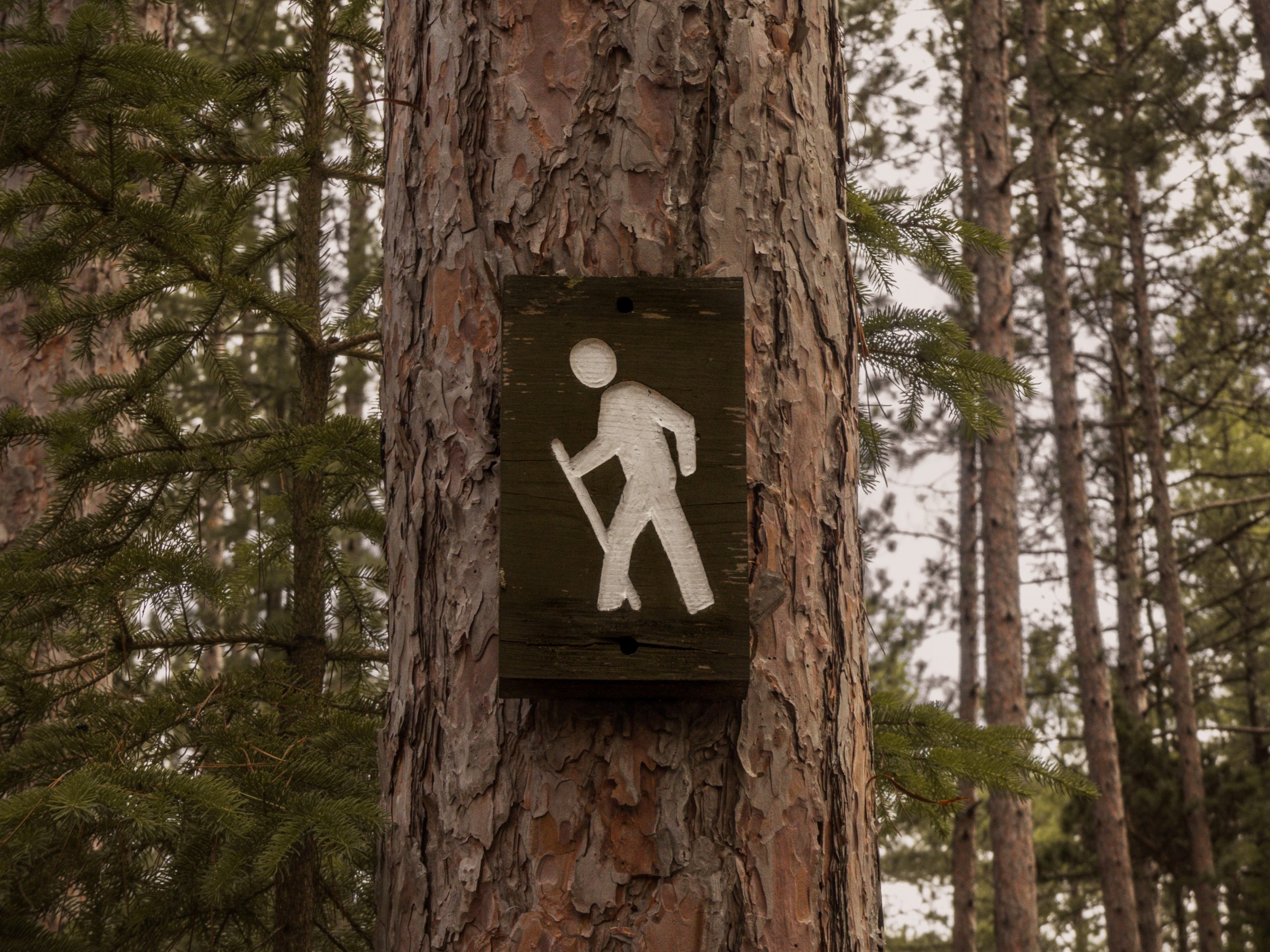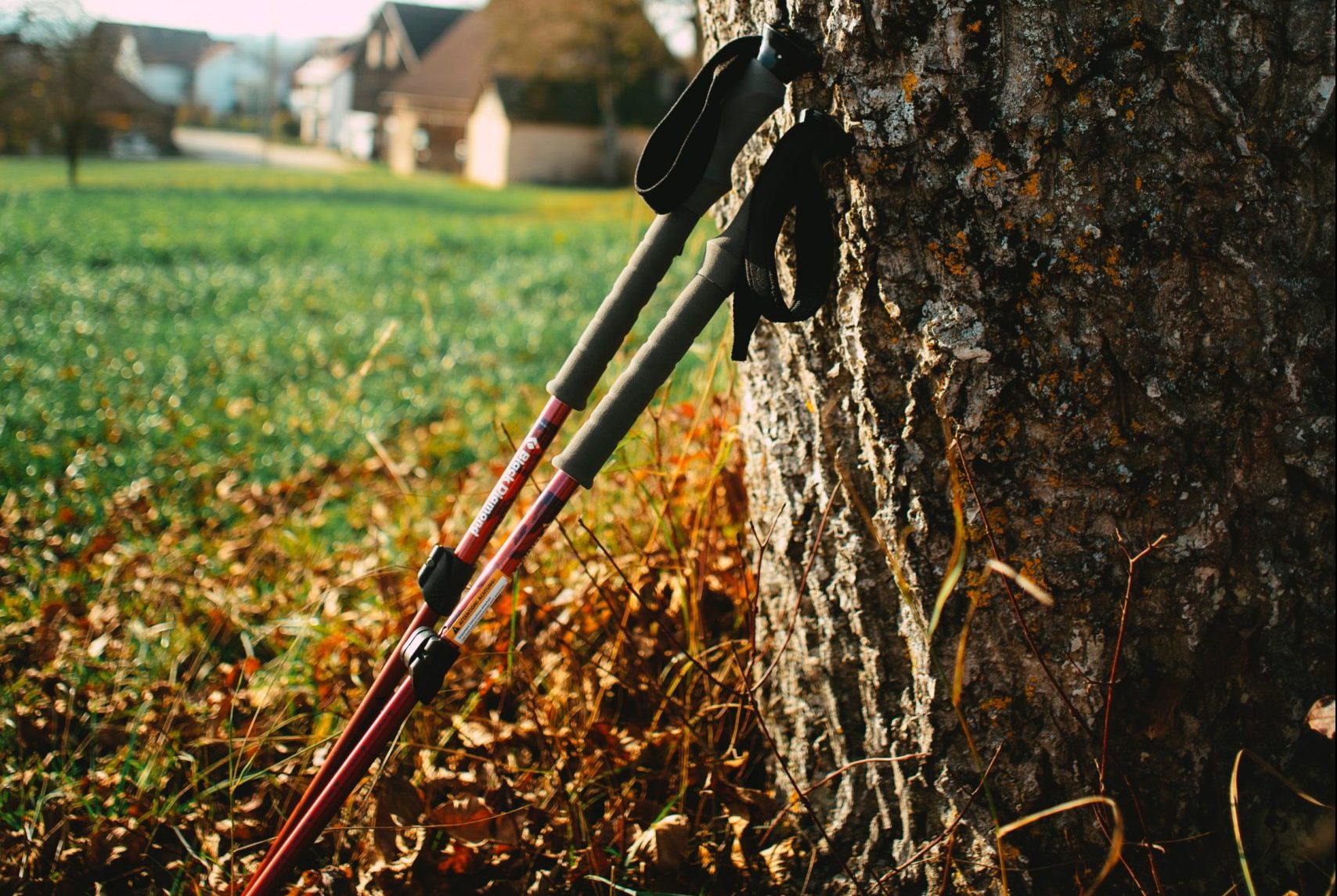Here’s a comprehensive guide to walking sticks, including their types, materials, features, and how to choose and use them effectively:
Types of walking sticks
 Traditional Walking Stick
Traditional Walking Stick
A traditional walking stick is a single, straight stick usually made of wood or metal. It is the most basic and classic form of a walking stick. Conventional walking sticks come in various lengths; you can choose one based on height and preference.
They often feature a simple handle design, such as a knob, crook, or derby handle, providing a comfortable grip for walking support. Traditional walking sticks are used for stability and balance during everyday activities or leisurely walks.
Hiking/Trekking Pole
 Hiking or trekking poles are designed for outdoor activities such as hiking, trekking, and mountaineering. These poles are typically made of lightweight materials like aluminium or carbon fibre to reduce fatigue during long hikes.
Hiking or trekking poles are designed for outdoor activities such as hiking, trekking, and mountaineering. These poles are typically made of lightweight materials like aluminium or carbon fibre to reduce fatigue during long hikes.
Hiking poles often come in pairs and are adjustable in height, allowing you to customise the length based on the terrain and your preferences. They feature a grip handle, usually ergonomic or cork, which offers a comfortable hold and reduces strain on the wrists. Some hiking poles also include wrist straps that help secure the bars to your hands and improve stability.
Quad Cane
A quad cane, or quadruped cane, features a four-pronged base at the bottom instead of a single tip. The quad base provides enhanced stability and support, making it suitable for individuals who require extra balance assistance.
The prongs or feet of the quad cane often have rubber tips for traction and to minimise slippage. Quad canes are commonly used by people with conditions that affect their balance, such as neurological disorders or post-surgery rehabilitation.
Folding Cane
Folding canes are designed to be portable and convenient for users needing to carry their walking aid. These canes typically consist of multiple sections that can be folded or collapsed into a compact size for easy storage or transport.
Folding canes often have adjustable height settings, allowing you to adjust the cane to your desired length. They are available in various materials, such as aluminium, carbon fibre, or composite blends. Folding canes are versatile and suitable for everyday use, especially for those who require occasional support or prefer a compact walking aid.
Seat Cane
A seat cane is a unique walking stick that serves a dual purpose. It features a handle that can be unfolded or converted into a small seat, giving the user a place to rest when needed. The seat portion is typically made of durable materials like canvas or nylon and can support the user’s weight.
Seat canes are often used by individuals who require frequent breaks during activities like walking, sightseeing, or waiting in lines. They offer convenience and comfort, allowing users to have a portable seating option while maintaining the functionality of a walking stick.
Each type of walking stick caters to different needs and preferences.
Consider your specific requirements and the intended use, and consult with healthcare professionals or mobility experts to determine which type of walking stick would best suit your situation.
Materials
Wood: Classic and aesthetically pleasing but may be heavier than other options.
Metal (Aluminum or Carbon Fiber): Lightweight, durable, and often adjustable.
Composite Materials: Blends of materials like carbon fibre, fibreglass, or plastic for enhanced strength and flexibility.
Features to Consider
Height Adjustment: Look for walking sticks with adjustable height settings to suit your needs.
Grip Handle: Choose a handle with a comfortable grip, such as an ergonomic or contoured design.
Wrist Strap: A strap attached to the handle helps secure the stick to your wrist, preventing accidental drops.
Tip Options: Different tips suit various terrains, including rubber for general use, spiked for traction on rough surfaces, or ice tips for slippery conditions.
Shock Absorption: Some walking sticks have built-in shock absorption mechanisms to reduce the impact on joints and provide a smoother walking experience.
Choosing the Right Walking Stick
Height: Stand upright in your shoes and have someone measure from your wrist bone to the ground. This measurement will guide you in selecting the appropriate stick length. b. Intended Use: Consider the primary purpose of your walking stick, whether it’s for general stability, hiking, or specific medical needs.
Weight: If you need to carry the walking stick frequently, opt for lighter materials like aluminium or carbon fibre. d. Handle Comfort: Test different handle styles to find one that fits comfortably in your hand and provides a secure grip. e. Stability: Choose a walking stick with a suitable base, such as a quad cane, if you require extra strength.
Proper Use and Care: Follow the manufacturer’s instructions and adjust the walking stick height. Hold the grip handle securely, placing your weight on the stick as you walk.
When using on uneven terrain, plant the stick firmly before stepping. Regularly inspect the tip for wear and replace it if necessary to maintain traction and stability.
Clean the walking stick with a damp cloth and mild soap as needed. Avoid prolonged exposure to moisture, extreme temperatures, or direct sunlight, as these may damage the stick.
Remember to consult a healthcare professional or physical therapist if you have specific mobility concerns or medical conditions that may require a specialised walking aid.
Summary
When purchasing walking sticks, it is advisable to consider buying them from a store specialising in disability equipment. They usually have staff knowledgeable about mobility aids and can provide expert guidance and support during purchasing.
They understand the unique needs and challenges faced by individuals with disabilities and can help you select a walking stick that caters specifically to your requirements.
They also offer various walking sticks for different conditions, including specialised features such as ergonomic handles, adjustable heights, and stability enhancements.
Ryan is a professional copywriter from Ryan’s Copywriting. He has a passion for sharing valuable information.



